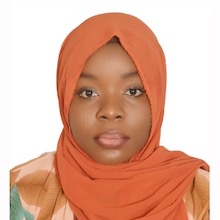About this CARP project
The Sudan-Sahel is a region made increasingly arid by the encroaching desert, and yet it must deal periodically with devastating floods. A double bind with many causes. Remarkably, in comparison to the attention given to droughts, concerns related to floods have garnered relatively limited focus on the global research and policy agenda. Consequently, the question of whether the recent shifts towards wetter conditions represent a lasting climatic transformation extending over the forthcoming decades remains a matter of intense dispute. This study posits that flooding should be accorded equal significance within the broader context of climatic shifts in the Sahel. Thus, our objective is to construct a simulated representation of climate anomalies and model the potential exposure to flood risks for both communities and the environment. By doing so, we aim to take a crucial stride towards reducing risks and mobilizing local knowledge to facilitate proactive learning and pragmatic adaptation strategies.
Study site
The Sudan-Sahel region of Nigeria encompasses various states within this climatic and ecological zone, including Borno, Taraba, Jigawa, Kaduna, Sokoto, and Niger.
Main Research Questions
- How are historical (1981 to 2021) rainfall and temperature anomalies distributed over space and time, and could the projected (2021 to 2061) anomalies show similar trends in the Nigerian Sudano-Sahelian region?
- Where are the national and regional disaggregation of different flood susceptibility zones in the Sudan-Sahel region of Nigeria, and what are their respective spatial extents?
- What is the spatial pattern of the national; and regional disaggregation of estimated population exposure headcount at varied flood susceptibility in the study area?
- What is the spatial extent of built-up structures, vegetation, farmlands, and barelands with respect to the national and regional disaggregated flood susceptibility level in the Sudan-Sahel region of Nigeria?
- How do communities perceive floods and respond to them?
This project aligns with disaster risk reduction and climate adaptation by emphasizing the significance of floods in the Sudan-Sahel region alongside droughts. Through climate anomaly simulation, flood risk modeling, and community engagement, the study seeks to enhance resilience, promote anticipatory learning, and inform practical adaptation strategies to reduce the region's vulnerability to floods and climate variability. This research seeks to inform disaster risk reduction and climate adaptation in the Sudan-Sahel region of Nigeria by providing detailed insights into changing climate patterns, flood susceptibility mapping, population exposure assessment, and community perceptions to guide targeted policies and strategies that enhance resilience and mitigate the impacts of floods.

Mohammed Halimatu Sadiya
PhD student
Ahmadu Bello University

Mohammed Kaka Shettima
PhD student
Ahmadu Bello University

Kura Abdulrazak Tijjani


